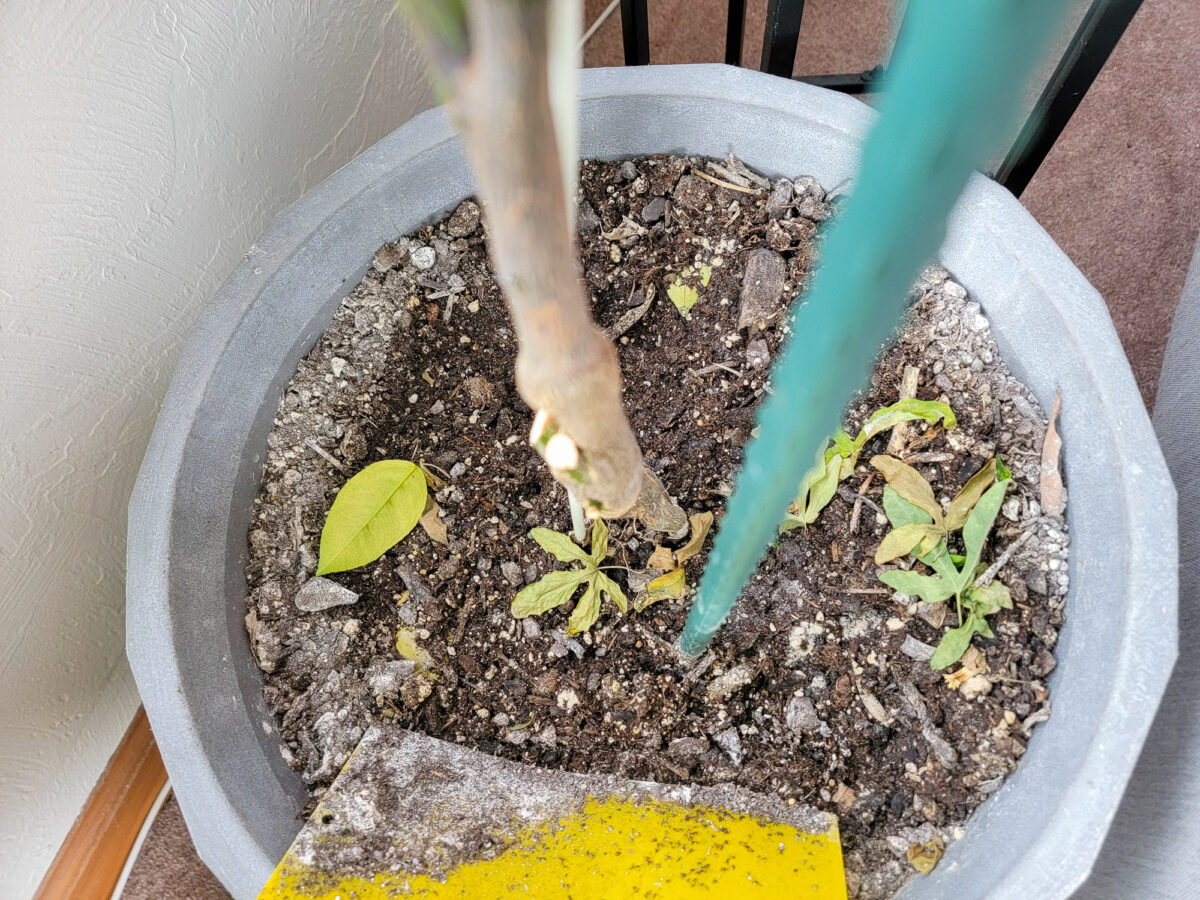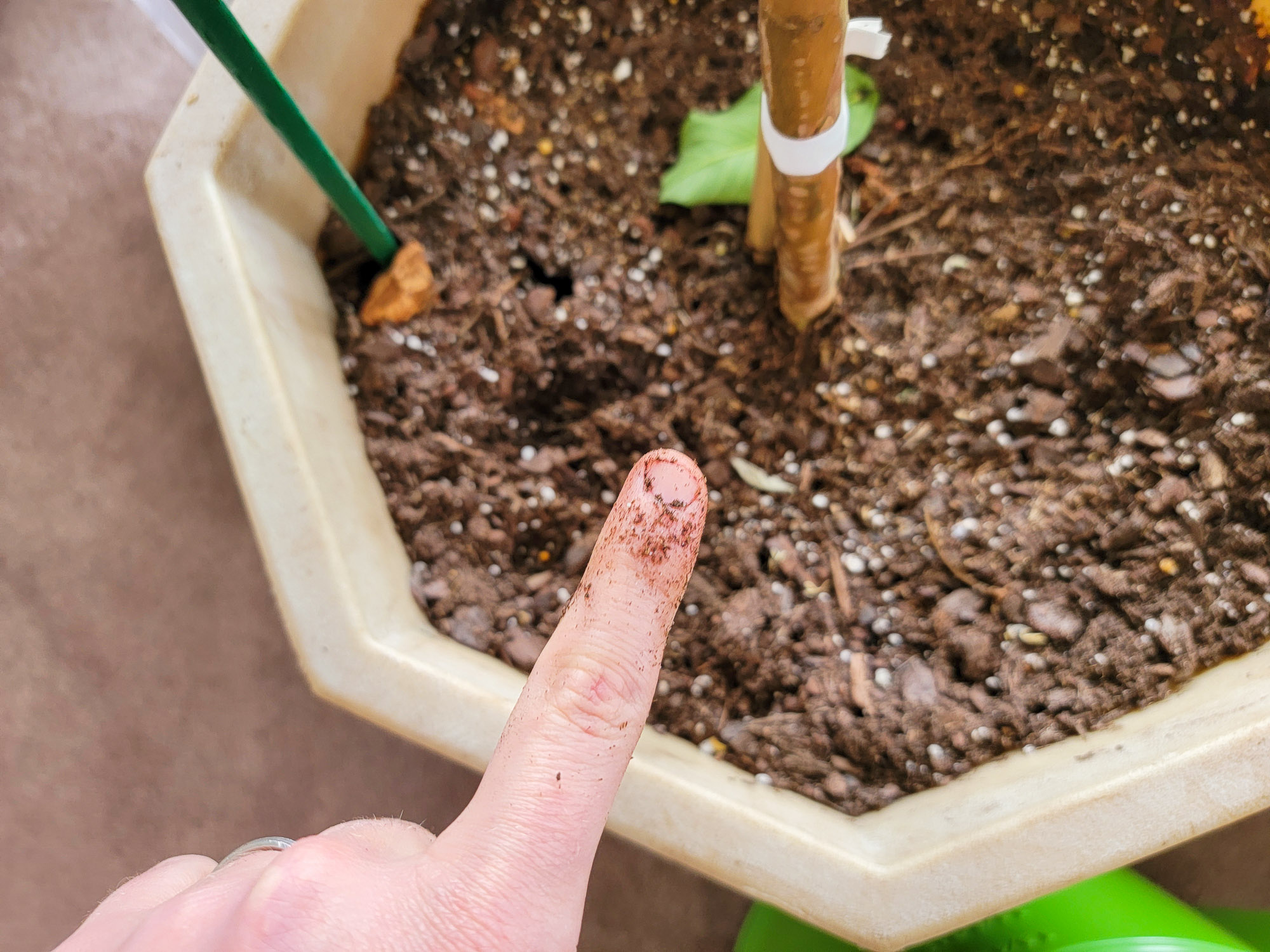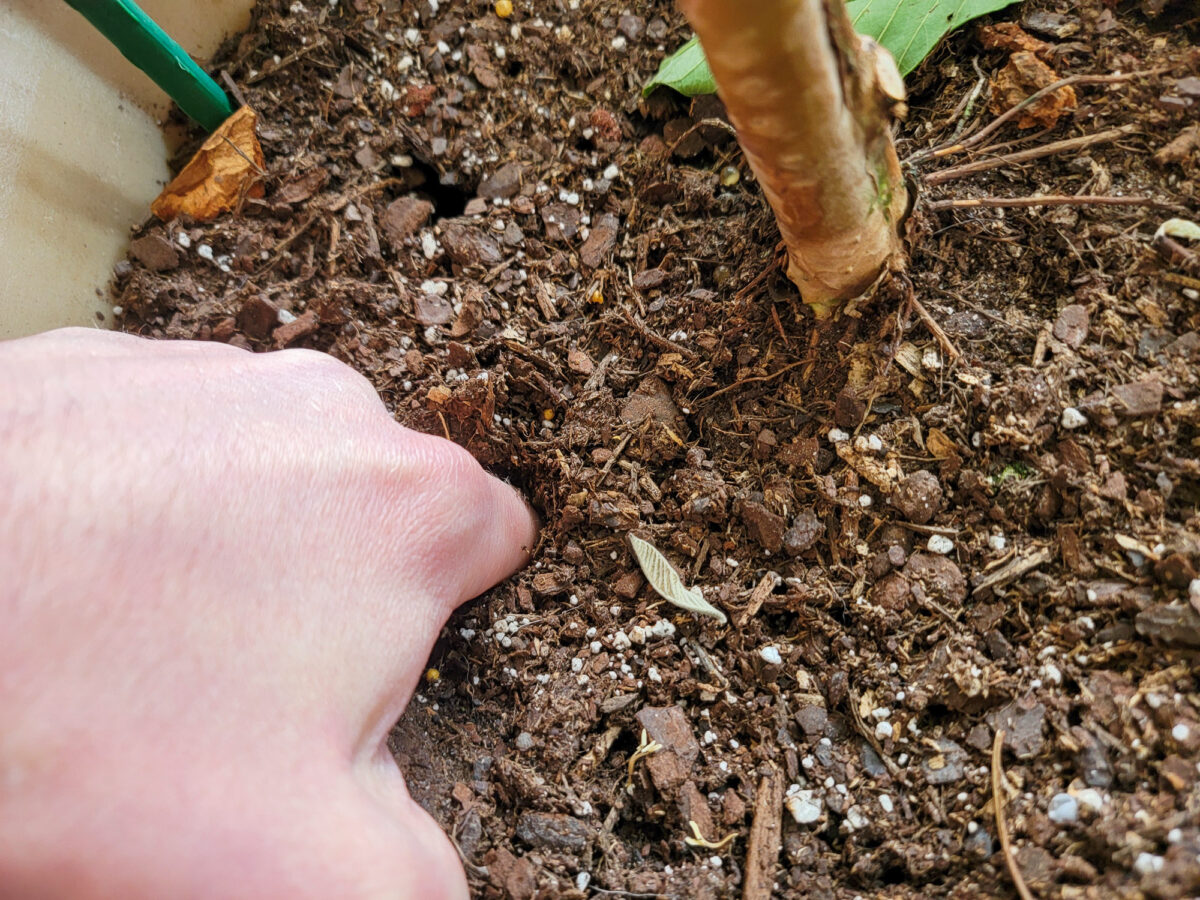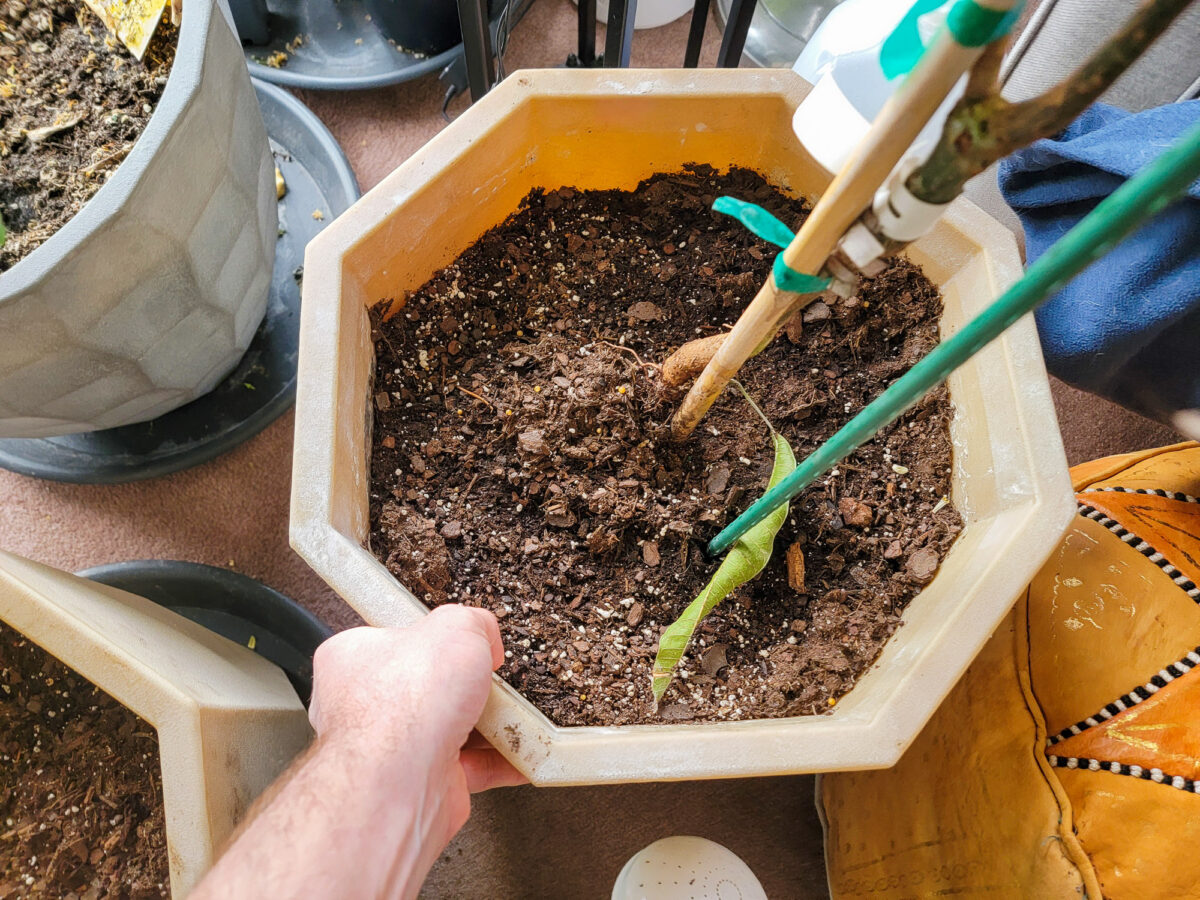Disclaimers: Our site uses demographic data, email opt-ins, display advertising, and affiliate links. Please check out our Terms and Conditions for more information.
For our tropical fruit trees in pots, getting watering right is critical. Water too much and you may trigger root rot and kill the plant. Water too little and you may lose fruit or, in extreme cases, kill the plant. When in doubt, I'd almost always go too dry as most of our trees can manage that scenario far better than being too wet.
So, that begs the question, when is the right time to water?
Most articles I had read on this topic simply offered a set watering frequency for each specific plant and left it at that. However, general watering intervals are often not good enough due to the many variables that impact our plants. Are your plants indoors or outdoors? Is the humidity high or low? Is it warm or cold? Is the plant big or small? Is it growing vegetatively or producing fruit? All of these can significantly influence how much water they will need.
To get a handle on your trees, you'll need to do some checks!
Visual Observation – Soil Color at the Surface

The first (and weakest) check you can do for watering intervals for your fruit trees is simply to look at the color of the soil at the surface.
Wet soil, in our experience at least, looks a fair bit darker than dry soil. Over time, particularly in between waterings, you can see the dirt become lighter and lighter in color until no dark spots remain. As the surface is likely the first spot for soil to dry out, either due to evaporation or the water moving further down towards the roots, this is always the first thing we check.
If the surface soil is dark, the odds are good the soil is still wet. But it is only when the color of the surface soil lightens and looks dry that we move on to our next step to investigate further.
- Note: Never use the soil color at the surface as the only sign it is time to water unless you have a very good understanding of your plant. This only tells you part of the story, and for plants that are sensitive to watering (read: almost all of our tropical trees), it could be risky.
Finger Check – Soil Wetness 2 Inches Down
While the wetness of the soil at the surface is indeed one sign to look for, in reality, we typically do not care about this soil as much as most trees do not have appreciable roots at the surface. This may not be the case for all plants, but it is for ours.
Instead, we want to check the soil wetness a few inches down where the root mass begins. This can be accomplished by sticking your finger into the pot about two inches down, wiggling around slightly (not too much if you feel roots, of course), and pulling your finger back out.

Do you feel dampness? Does soil cover your finger when you pull it out? Or is it bone dry without any soil coming along for the ride? This is fairly telling about what conditions are like at the roots and can be a great indicator of whether or not it is time to water.
But, much like the previous point, the exact conditions of your plant (e.g. soil type, its water retention, etc.) can vary things here. Only with time and experience can you start to tell a difference. So give a check before and after watering to get some ideas on what the different conditions feel like for your own plants.
- Note: Some like to use a smaller tool like a toothpick or bamboo skewer over your finger. I could see some merit in this one because it is less likely to disturb the roots, but there is no better way to detect moisture than using your finger. (We tested moisture meters, too, but almost all the products we have tested have been borderline worthless).
Test the Weight – The Ultimate Tell
Finally, we come to a test that can only be done for those with trees in containers- a weight check.
The simple truth of the matter is that water is heavy. 2.2 pounds per liter or 8.34 pounds per gallon heavy. If you can, lift your pot before watering and after watering and you should be able to tell a fairly remarkable difference- especially with larger tropical trees that typically need a fairly good dousing.
While this one takes time to get a feel, the weight of your plants is often the ultimate tell. It is less subjective than looking at the surface color of the dirt or doing a finger test. Your plant is either heavy or noticeably lighter. As long as you have a good mental check of what a “dry” case is, even detecting partially wet trees can become easy with experience.
If your soil looks dry, feels dry, and is light when picking up, well, you may be due for watering! If the soil looks wet, feels wet, or is heavy, you may want to wait- it is as simple as that.
While these are all good checks to perform to determine if it is time to water your trees, at the end of the day, you also need to match this to the needs of your particular tree. As mentioned at the introduction of the article, our own tropical trees generally like to be more dry than wet, but can be negatively impacted when both too dry and too wet. Other plants may be a different case entirely- these are just signs to look for before deferring to conventional watering rules for your plant.
Combine all the knowledge you have, and you'll be well on your way to watering success!
How do you check to see if it is time to water your fruit trees in containers? Comment below to share!



